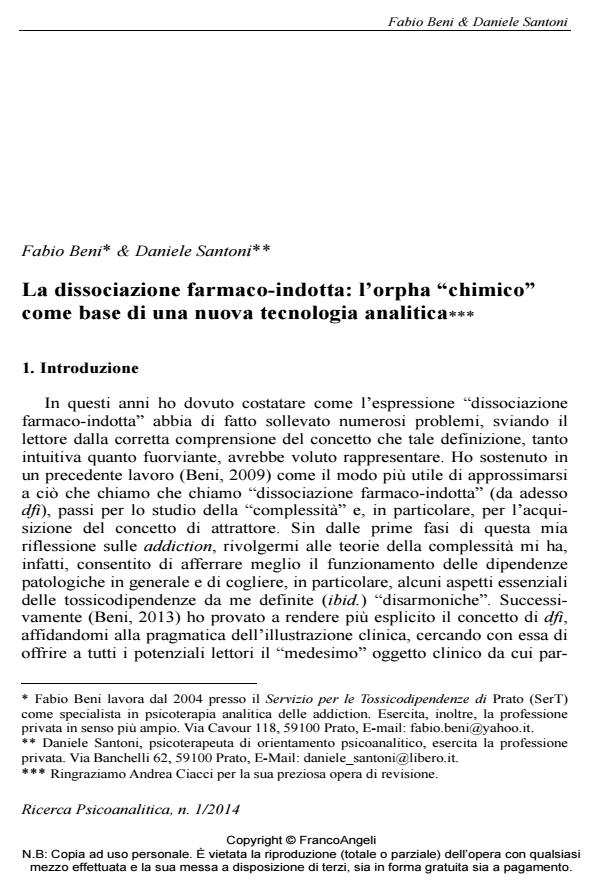Substance-induced dissociation: chemical-orpha as base of a new psychoanalytic technology
Journal title RICERCA PSICOANALITICA
Author/s Fabio Beni, Daniele Santoni
Publishing Year 2014 Issue 2014/1
Language Italian Pages 18 P. 55-72 File size 692 KB
DOI 10.3280/RPR2014-001005
DOI is like a bar code for intellectual property: to have more infomation
click here
Below, you can see the article first page
If you want to buy this article in PDF format, you can do it, following the instructions to buy download credits

FrancoAngeli is member of Publishers International Linking Association, Inc (PILA), a not-for-profit association which run the CrossRef service enabling links to and from online scholarly content.
In this paper the authors try to illustrate the concept of orpha at the light of complexity theory and, in particular, paying attention to concept of the hypercycle. In this way it’s possible to understand the polarization of the mind around a gravity centre. Doing that, it’s also possible to have a new understanding of the Ferenczi’s technology in order to use it in the field of the addiction.
Keywords: Orpha, drug-addiction, psychoanalysis, dissociation, hypercycle
- Il trattamento preliminare: l'al di qua del transfert e le sue trappole Fabio Beni, Daniele Santoni, in RICERCA PSICOANALITICA 3/2016 pp.107
DOI: 10.3280/RPR2016-003008
Fabio Beni, Daniele Santoni, La dissociazione farmaco-indotta: l’orpha "chimico" come base di una nuova tecnologia analitica in "RICERCA PSICOANALITICA" 1/2014, pp 55-72, DOI: 10.3280/RPR2014-001005